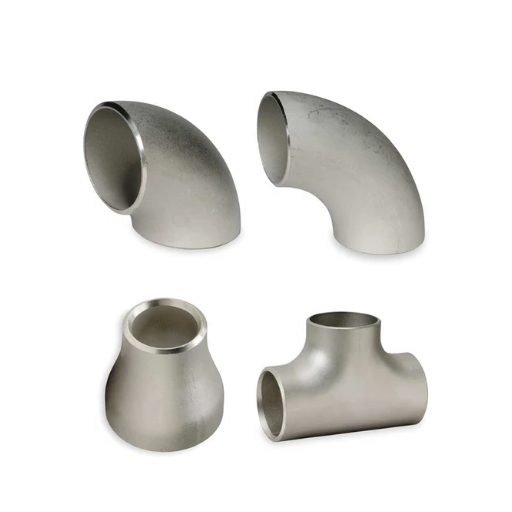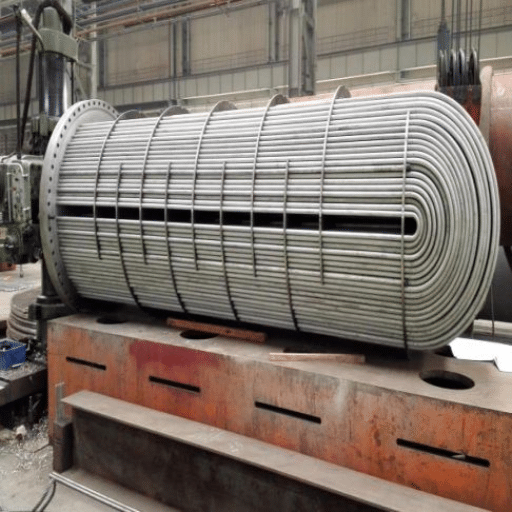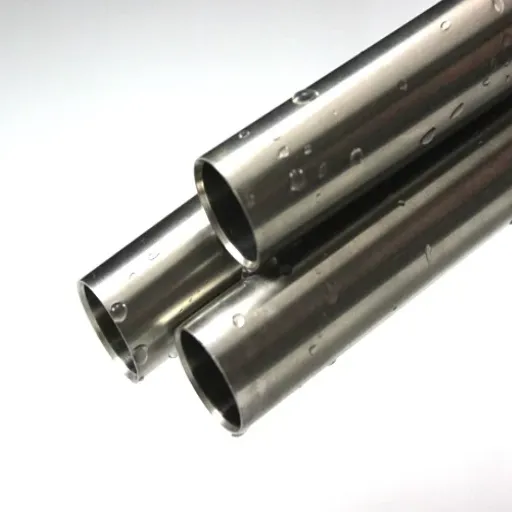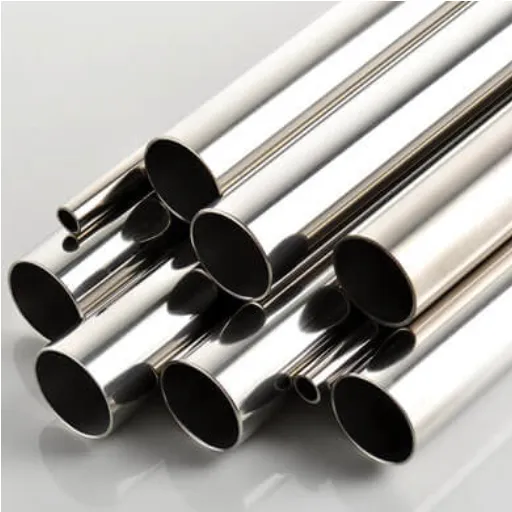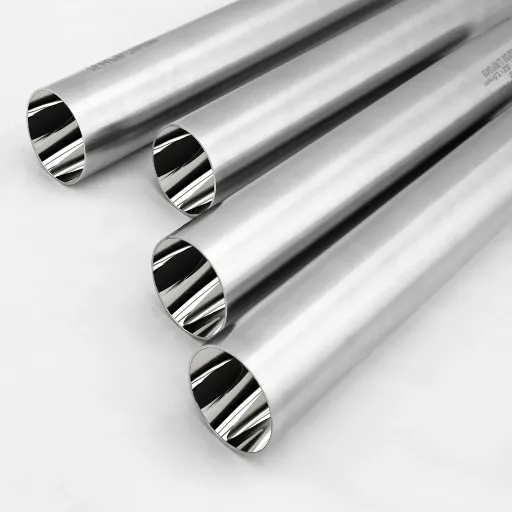Stainless steel butt weld fittings are an essential component in the world of piping systems, ensuring durability, reliability, and seamless connections. Whether used in high-pressure industrial applications or for precise engineering projects, these fittings play a critical role in maintaining efficiency and structural integrity. This article will provide a comprehensive exploration of stainless steel butt weld fittings, covering their design, types, benefits, and applications. By understanding these critical components, you can make informed decisions for your projects and optimize your systems for long-term performance. If you want to deepen your knowledge of these versatile fittings and how they contribute to robust piping systems, you’re in the right place—read on to discover the key details you need to know.
What Are Stainless Steel Butt Weld Fittings?

How Are Stainless Steel Pipe Fittings Manufactured?
Stainless steel pipe-fitting manufacturing involves meticulous and controlled processing to satisfy stringent quality criteria. The development of fittings almost always begins with the selection of high-grade stainless steel as raw material. This stainless steel, in the form of billets or plates, is primarily selected due to its good corrosion resistance and good mechanical strength and durability. These materials are subjected to tests of chemical composition and mechanical properties to ascertain whether they conform to said specifications.
Once the raw material preparation is complete, it undergoes forming processes, which could be hot or cold, aiming at attaining the external shape and dimensions of the fitting. In the case of hot forming, stainless steel is heated at a high temperature to become malleable so that the stainless steel can be formed into elbows, tees, or reducers by forging. For shaping fittings with complex geometries, cold-forming methods such as pressing or extrusion are employed to ensure tighter tolerances during manufacture. This stage is a fundamental step for fabricating fittings in conformity with international standards in terms of dimensions and performance.
Thereafter, the fittings undergo heat treatment and surface finishing. Heat treatment is employed to remove internal stresses and develop a favorable structure in the material; for stainless steel, heat treatment is usually the annealing process. They are surface-treated by pickling and passivation to remove iron contamination and other impurities so as to restore the protective oxide layer on the surface of the steel and provide excellent corrosion resistance. Finally, they go through strict quality control tests involving dimensional inspection, pressure testing, and material analysis to verify their ability to satisfy industry standards and be safe for use.
What Materials Are Used in Stainless Steel Fittings?
A variety of grades of stainless steel are used for manufacturing stainless steel fittings, with the most common being 304, 316, and duplex stainless steels. They are chosen for their outstanding mechanical properties, corrosion resistance, and durability in a wide spectrum of environmental conditions. Type 304 stainless steel is generally used when corrosion resistance is needed under relatively mild atmospheric conditions, whereas type 316 stainless steel has molybdenum added to it, giving it better resistance against exposures to more severe environments consisting mainly of chlorides and other corrosive agents.
Stainless steel predominantly contains iron as its basic element, usually reinforced with chromium (at least 10.5%), which forms a passive oxide layer on the surface, thus imparting corrosion resistance to the material. Other metals like nickel, molybdenum, or manganese are typically added to impart certain other properties. For example, nickel increases strength and tenacity; molybdenum greatly improves resistance to pitting corrosion in marine or chemical environments. Duplex stainless steels have combined ferritic and austenitic microstructures that offer higher strength and better resistance to stress corrosion cracking, thereby fulfilling the demands of harsher applications.
Apart from the primary alloys, several small proportions of elements are added during manufacture to enhance the performance of the chosen stainless steel. Carbon contributes to the strength and hardness of the steel, while nitrogen aids with tensile strength and corrosion resistance. These balanced chemical compositions enable stainless steel fittings to conform to very demanding industry standards while assuring a long life in arduous operational climates.
Why Choose Butt Weld Pipe Fittings Over Other Types?
Due to their renowned strength and durability, butt weld pipe fittings garner an impressive retention of general preference. During welding, the joint between the two ends of the fitting becomes a single line, thus helping in the prevention of leakage and ensuring structural integrity even in applications under very high pressure or temperature. Given this, these types of fittings find excellent utility in industries demanding the utmost performance, such as oil and gas, petrochemicals, and power generation.
This is another rank of PVC-based benefits, in which butt weld fittings smooth unrestricted flow. The fitting ends are beveled, and the welded end is smooth, hence less turbulence and pressure drop in the pipe system. Such occurrences going against efficient operation, pressure-relevant corrosion damage, or material wear at the turbulence zone ultimately lessen the life of the pipe infrastructure.
On the other side, another advantage of butt weld fittings is their adaptability and cheap cost practically. They can be employed for an almost unlimited range of pipe sizes and can be fabricated to meet more complicated configurations, thus allowing the designer complete freedom. Their strong and durable nature, however, will surely prove a reduction in the overall maintenance and replacement cost, making them an environmentally friendly criterion and a cheaper option for different processes.
How Do Stainless Steel Elbows Work?
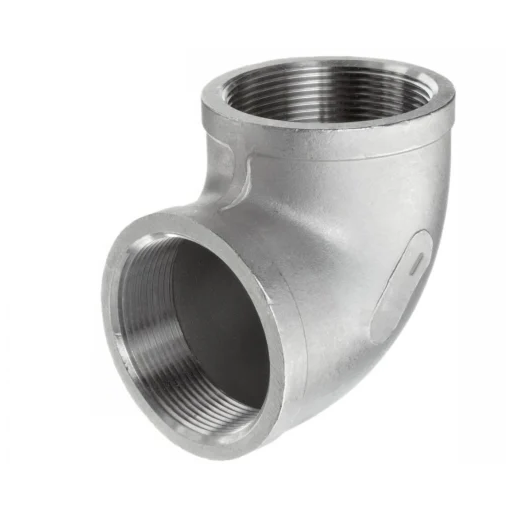
What is the Purpose of Elbows in a Piping System?
Stainless steel elbows assure that piping systems carry a proper design and functionality by allowing changes in the direction of flow of fluids or gases. These components join two lengths of pipe at an angle, mostly 45°, 90°, or 180°, allowing the system to maneuver around spatial constraints while maintaining the structural design and providing optimal flow characteristics. Elbows are installed to reduce turbulence and pressure drop within the pipe, both factors that are vital for system functionality. An industry-wide widespread application has made these components indispensable for oil and gas, water treatment, chemical processes, and HVAC systems.
Material science advances have furthered the utility of stainless steel elbows. Stainless steel has a high mechanical strength, corrosion resistance, and tolerance to very high temperatures and pressures. Hence, the elbows made from stainless steel are best at functioning under the harsh conditions prevalent in chemical plants or marine environments. Further, stainless steel resists abrasive or reactive chemicals, thereby ensuring a longer service life and practically eliminating system failures. They lower the maintenance cost in the long term and thus portray the economic value of stainless steel elbows in industries.
Precision engineering follows the design approach of stainless steel elbows to ensure that all safety and performance criteria are met. Wall thickness, bend radius, surface finish, etc., are all critical parameters controlled during manufacture to suit the installation needs. For example, the small radius elbow could be employed in tight spaces where clearance is an issue, whereas the long radius version is best suited for systems where low friction losses are a primary concern. This design consideration directly relates to the optimization of stainless steel elbows in realizing efficient, versatile pipe networks with long life.
How Do Stainless Steel Elbows Impact Fluid Flow?
Depending on the geometry, physical properties of the material, and application, stainless steel elbows will interfere with the fluid flow under a given set of operational conditions. The characteristics considered for such a study generally consist of flow resistance, pressure loss, and turbulence. For example, elbows produce local pressure losses due to the change in direction of the flow; hence, tight radius elbows generally cause higher resistance than those of long radius. This resistance is further explained through friction factors and loss coefficients, both varying depending on the elbow’s degree and curvature.
Furthermore, the finish of the internal stainless-steel elbow surface largely determines the behavior of the flow. Such a finish should be smooth to keep frictional losses to a minimum and also prevent deposits of any nature that might hamper flow efficiency in the long run. CFD simulations and experimental studies have alluded that meticulously designed long radius elbows lead to minimum turbulence and thus maintain laminar flow at low velocity in the system. In contrast, short radius elbows may generate eddies at higher velocities, which can cause wear in particular industrial applications.
Such awareness comes in handy when considering all the parameters for designing any system that requires the accurate control of fluid flow, for example, in chemical processing, HVAC, or water treatment plants. Thus, correctly selected stainless steel elbows contribute to the overall efficiency of operation and further prolong system life.
Common Applications for Stainless Steel Elbows
Highly valued for their strength, corrosion resistance, and various abilities to withstand extreme temperatures and pressures, stainless steel elbows find themselves invaluable from an industrial perspective. Thus, in the very forefront of their applications, oil and gas elbow fittings permit the transportation of hydrocarbons along intricate networks of pipelines with utmost reliability in highly corrosive environments. Petrochemical and chemical processing industries, in the meantime, employ stainless steel elbows in handling flows of reactive or hazardous materials in safety and operational efficiency.
HVAC (Heating, Ventilation, and Air Conditioning) systems employ stainless steel elbow aids in optimizing air and temperature regulation for residential and commercial buildings. Elbows help minimize turbulence while ensuring balanced distribution of air into the ductwork systems, whereas, in the water treatment industry, stainless steel elbows guide water flows from filtration to desalination to distribution systems, with high-salinity or chemically-treated water as the medium.
Another prime importance resides in the food and beverage industries, where sanitary-grade stainless steel elbows must maintain the highest level of hygiene. Thus, they assist in processing and moving consumable goods that help resist contamination and uphold product integrity. Other uses of stainless steel elbows include power generation, especially high-pressure steam lines and cooling systems, showing how versatile they can be in dealing with mixed operating demands. Stainless steel elbows find themselves present and accounted for in so many industries because of their adaptability and inherent durability, making good on efficiency, safety, and reliability.
Why Use Nickel Alloy in Weld Fittings?
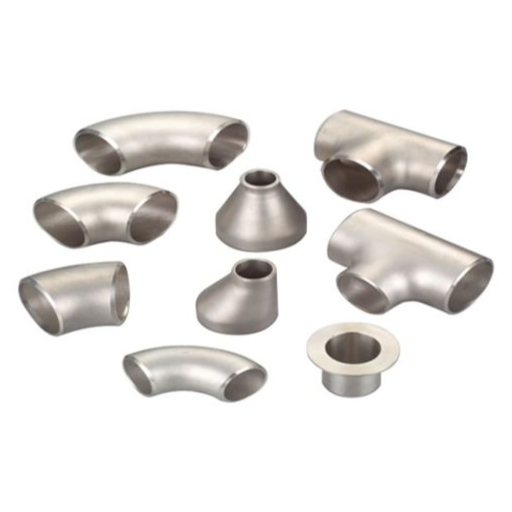
Advantages of Nickel Alloy in Welded Pipe Fittings
Nickel alloys are widely utilized in the fabrication of welded pipe fittings due to their unique properties that fulfill strenuous industrial requirements. These features mark nickel alloys as a necessity for applications that call for durability, resistance, and dimensional stability. Here are five critical advantages of using nickel alloys in welded pipe fittings:
- Exceptional Corrosion Resistance: They can resist a wider range of corrosive environments, such as acidic, alkaline, and saline media. For instance, nickel-base alloys such as Hastelloy withstand hydrochloric acid and sulfuric acid. Hence, they are suitable for applications in the chemical processing plant. Such corrosion resistance provides a longer working service life and less maintenance.
- High-Temperature Strength: The nickel alloys keep their integrity in structure and the mechanical properties in very high-temperature conditions. For example, the Inconel 625 alloy can be used at temperatures over 2,000°F (1,093°C) in aerospace, power generation, and heat exchanger systems.
- Versatility in Harsh Environments: A nickel alloy’s chemical composition allows it to perform efficiently in hostile environments with high pressure, oxidation, or thermal cycling. This is very important for the oil and gas industries, where equipment must resist dynamic operational stresses.
- Enhanced Weldability: Nickel alloys are weldable, can resist hot cracking, and ensure that strong and defect-free weld joints are formed. This property eases fabrication, thus improving welding workflow, and yields welded components with quality attributes that are difficult to match.
- Longevity and Cost Efficiency: While nickel alloys may cost more than other materials at the initial purchase, the huge cost savings generated from their steep durability and low maintenance requirements far outweigh the initial costs. For instance, they are very enduring in corrosive or high-pressure operational environments, which limits the time for common replacement, hence guaranteeing time efficiency.
These are what make nickel alloys critical to welded pipe fittings in a number of industries, such as chemical processing, marine engineering, aerospace, and power generation. They are vital in modern engineering applications, appearing as the backbone in the designs that need reliability in extreme conditions and performance above and beyond.
Comparing Nickel Alloy to Other Materials
A comparative test is performed to assess nickel alloys for corrosion resistance, temperature stability, and durability in harsh environments, testing them against stainless, carbon, titanium, and CuNi alloys.
|
Attribute |
Nickel Alloy |
Stainless Steel |
Carbon Steel |
Titanium |
Copper-Nickel |
|---|---|---|---|---|---|
|
Resistance |
Superior |
Good |
Poor |
Excellent |
Excellent |
|
Heat Tolerance |
High |
Moderate |
Low |
High |
Moderate |
|
Durability |
High |
Moderate |
High |
High |
Moderate |
|
Expense |
High |
Moderate |
Low |
High |
Moderate |
|
Usage |
Versatile |
General |
Basic |
Niche |
Marine |
What Are the Specifications for Stainless Steel Butt Weld Fittings?
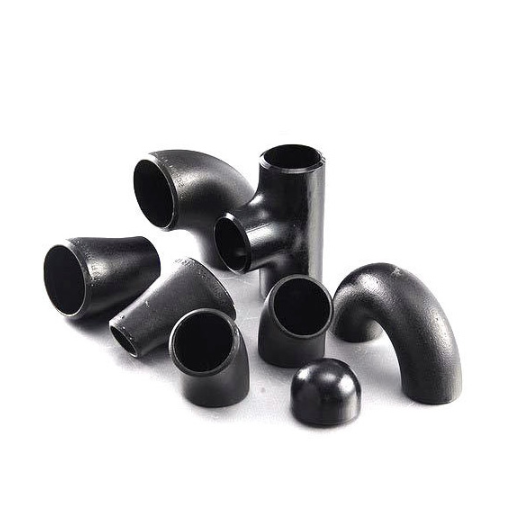
How to Ensure Quality and Reliability in Pipe Fittings
With rigorous inspection protocols, material standards, and manufacturing processes, pipe fittings are assured of quality and reliability. In the matter of durability and performance, the operator has the responsibility of checking the fittings for conformity with specifications laid down by the various industrial bodies such as ASTM, ASME, ISO, or ANSI. These standards imply the criteria for material composition, dimensional tolerances, and pressure requirements appropriate to the given use of the fitting.
Visual inspection of the surface for any signs of defects, such as cracks or pitting, is necessary for the detection of any initial quality problem. Other NDT methods, such as ultrasonic testing, radiography, and magnetic particle inspection, may be employed to find any hidden defects without causing any damage to the fittings. They would then confirm the details of the fitting and thus ensure that it can sustain operational loads.
Material traceability is also of utmost importance. Each batch should have complete and adequate certification to show its chemical composition and mechanical properties. Such high-quality fittings will be heat-treated and composed of corrosion-resistant materials such as stainless steel or suitable alloy grades to resist severe temperature and pressure variations as well as harsh environmental conditions.
Finally, fittings should be subjected to hydrostatic or pneumatic pressure testing for resistance at working pressure without failures. Additionally, quality compliance audits at the site and evaluation of supplier performance ensure continual quality enhancement by identifying opportunities for improvement and ensuring compliance with the best manufacturing practices.
Common Specifications and Standards
There are recognized international standards so that industrial fittings must be designed and manufactured so that fitting parts can be interfaced with one another, giving confidence in the functioning of the same, and regarded as reliable and safe for use. For example, ASTM A182 covers forged fittings of high quality for use at elevated temperatures and pressures, while ANSI B16.5 treats flanges and flanged fittings over a variety of piping systems.
Also, in the realms of oil and gas, petrochemicals, and power industries, one might frequently consider applying standards such as API 6A (specifications for wellhead and Christmas tree equipment) or ISO 14313 (pipeline transport systems). These frameworks guarantee that fittings satisfy the severe operational environment requirements of temperature stability, tensile strength, and corrosion resistance.
It is also imperative for the makers to comply with material specifications, which are intended to comply with regulatory and environmental codes. They are implemented to avoid catastrophic failures by identifying material characteristics and performance criteria. More experienced third-party certification ensures the reliability of the product; thus, it does away with operational downtime and improves safety and efficiency.
How to Choose the Right Butt Weld Fitting for Your Needs?
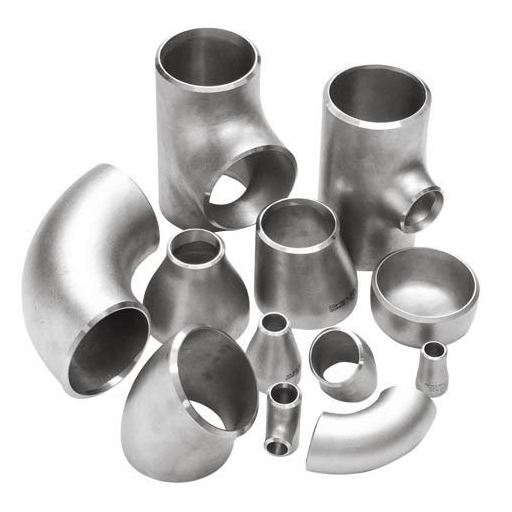
Factors to Consider in Fitting Selection
The appropriate butt weld fitting selection involves some critical factors that must be noted to ensure the proper application and compliance with industry standards:
- Material Compatibility: Check for matching material properties between piping and fitting to be used for certain constructions. Stainless steel fittings, for example, offer high corrosion resistance for high-temperature and chemically aggressive environments, while carbon steel is generally employed at lower temperatures for general utility operations. Also, check for compliance with standards such as ASME B16.9 to ensure material integrity under variations of pressure and temperature.
- Pressure and Temperature Ratings: Ascertain the pressure and temperature conditions of the system to select fittings that can withstand the specified conditions. Selected fitting should either meet or exceed the pressure and temperature requirements of the system to avoid leakage or failure under working conditions.
- Wall Thickness and Pipe Schedule: The wall thickness of the butt weld fitting should correspond to the pipe schedule of the system to have uniform strength and flow characteristics. Differences in schedules may lead to stress concentrations, causing failure of the system.
- Dimensional Accuracy: Fitings should have the dimensions corresponding to system requirements. A strict dimensional control is necessary to provide a connection with the least amount of compromise to the system reliability and to minimize rework.
- Corrosion and Erosion Resistance: Consider the nature of liquids or gases in the systems. Aggressive ones or high velocity may require materials having improved anti-corrosion and erosion properties, such as certain alloys or coatings.
- Compliance with Standards: Check that the fittings comply with international standards like ASME, ASTM, ISO certification, etc. In critical industries such as oil and gas, NACE MR0175/ISO 15156 certification may be occasionally required.
- Operational and Maintenance Requirements: Consider system operational requirements and fittings maintenance requirements. Easy to inspect and may increase the fittings’ life, thus reducing maintenance costs associated with downtime and repair.
- Environmental and Safety Considerations: Alternatively, depending on environmental conditions where exposure to sour gas, extreme weather, or seismic action will occur, special fittings may be required to ensure safe and reliable operation.
Evaluating and concluding on above will conceptualize the system efficiency, safety, and service life by determining the correct butt weld fittings for their specific application.
Assessing the Size and Diameter of Pipe Fittings
Fittings for the pipes that are appropriate in size must be selected precisely with respect to the size or diameter for their compatibility in any piping system. Therefore, pipe sizing is denoted by its Nominal Pipe Size (NPS) or Diameter Nominal (DN); this is a standardized dimension depending on both inside diameter and wall thickness of the pipe. In designing the system, engineers must incorporate the outside diameter (OD) and wall thickness since these parameters together confer a specific flow capacity and pressure capacity to the pipe.
The pipe schedule, defining wall thickness for various NPS, is another important parameter to be considered while performing the selection. Higher schedules, such as Schedule 80 or Schedule 16,0, are mostly employed when the pressure is comparatively higher and wall strength demands high priority. On the other side, lower schedules such as Schedule 10 or Schedule 20 well suit a low-pressure system so as to save the cost and weight of materials. Pipe sizing charts and computer modeling software can aid in the respective calculations to appropriately match the pipe fittings to given specifications.
Also, while deciding upon fitting diameters, consideration may be given to allowance for expansion due to temperature, operational tolerances at different pressures and/or temperatures, and allowances for fouling and corrosion with respect to time. These considerations are material for guaranteeing system integrity throughout a long period of operation as well as reliability for an application in sectors such as oil and gas, chemical processing, and power generation.
Choosing Between Concentric and Eccentric Reducers
When selecting between concentric and eccentric reducers, the choice rests primarily on the application, flow characteristics, and alignment constraints. Concentric reducers are mainly used in vertical piping systems or applications where, for some reason, the pipe centerline remains constant. Their geometric symmetry guarantees uniform flow distribution; in theory, they are suitable in applications involving pump suctions, vertical fluid flow, or space constraints that require alignment. Considering air traps, however, the concentric reducer is not suitable for horizontal installation under certain conditions, which may cause cavitation or flow disturbances.
In contrast, an eccentric reducer finds wider application in a horizontal piping system. Due to its asymmetric profile, it aligns the pipeline either on the top or on the bottom side, depending on the orientation that is desired. A bottom-flat eccentric is good for preventing fluid collection or air pockets in systems where good drainage or uninterrupted flow is essential, whereas a top-flat may assist in lessening sediment buildup. So, all of this makes the eccentric reducer a very workable option where the effects of gravity or handling of particulates are major concerns.
The decision to use one or the other also depends upon the complications of velocity, pressure drop, and the requisites peculiar to the industry. The oil and gas industry, for example, places a premium on minimizing turbulence and gas pocket formation in their pipeline designs, based on the fact that pipelines are often the medium for transporting multiphase fluids. Similarly, in a power generation plant, the process of selecting the right reducer to prevent water hammer effects is a step paramount towards ensuring system integrity. Knowing what unique operations your pipeline system entails is a step towards deciding which reducer type best fits your needs and poses fewer disadvantages to performance and durability.
References
-
Characterization and optimization of direct drive friction welding parameters in small stainless steel tube welds – Focuses on welding parameters and leak rate measurements in stainless steel tubes.
-
Welding Considerations for Stainless Steel Pipe – Provides detailed guidelines for welded connections in stainless steel pipe fittings.
-
Thick wall stainless steel piping in hydroprocessing units- heat treatment issues – Discusses stress relief, cracking, and material compatibility in stainless steel welds.
Frequently Asked Questions (FAQ)
Q: What are stainless steel butt weld fittings?
A: Stainless steel butt weld fittings are components designed to be welded onto stainless steel pipes or tubes to connect, redirect, or terminate the flow of a piping system. They are commonly used in various industries due to their durability and resistance to corrosion.
Q: How do stainless steel butt weld fittings differ from other fittings?
A: Unlike threaded or socket weld fittings, stainless steel butt weld fittings are designed to be welded directly to pipes or tubes, providing a seamless and robust connection that offers excellent resistance to corrosion and pressure.
Q: How do you install a stainless steel butt weld cap?
A: A stainless steel butt weld cap is installed by aligning it over the end of a pipe or tube and welding it in place. The cap is used to seal the end of a piping system, preventing flow and protecting the pipe from contamination or damage.
Q: What are the advantages of using stainless steel butt weld tees?
A: Stainless steel butt weld tees are used to provide a branch or outlet in a piping system. They allow for the creation of a new flow direction while maintaining the integrity of the system. Their resistance to corrosion and ability to withstand high pressure make them a preferred choice for many applications.
Q: Can stainless steel butt weld fittings be used with aluminum pipes?
A: While stainless steel butt weld fittings are primarily designed for use with stainless steel pipes, they can connect to aluminum pipes using appropriate techniques. However, careful consideration of galvanic corrosion and other factors must be taken into account, and TIG welding is often used for such applications.
Q: Why are stainless steel butt weld fittings commonly used in hydraulic systems?
A: Stainless steel butt weld fittings are commonly used in hydraulic systems because they provide secure, leak-proof connections that can withstand high pressure and resist corrosion. This ensures the reliability and longevity of the hydraulic system.
Q: What are the differences between equal and reducing tees in stainless steel butt weld fittings?
A: Equal tees have outlets of the same diameter as the tube, while reducing tees have a smaller branch outlet. This allows for changes in flow diameter within the piping system, providing flexibility in design and function.
Q: How does the wall thickness of stainless steel butt weld fittings affect their application?
A: The wall thickness of stainless steel butt weld fittings affects their ability to handle pressure and temperature. Heavier wall fittings are suitable for high-pressure applications, while lighter ones may be used in less demanding environments.
Q: What is the role of a stainless steel butt weld end cap in a piping system?
A: A stainless steel butt weld end cap plays a crucial role in branching or ending a piping system. It is used to terminate the flow, protect the pipe end, and sometimes to allow for future expansion or modifications of the system.

